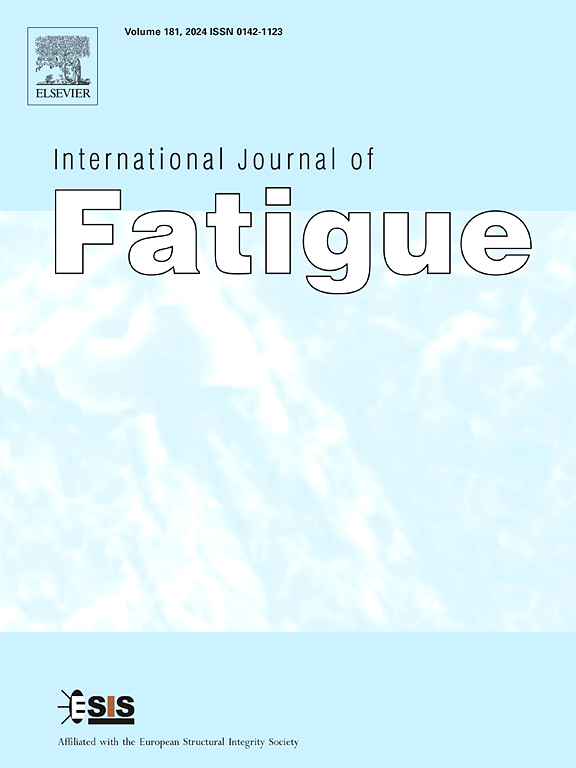The physics of fatigue crack propagation
IF 5.7
2区 材料科学
Q1 ENGINEERING, MECHANICAL
引用次数: 0
Abstract
The fatigue life can be expressed as the sum of the number of loading cycles to initiate a crack and propagate the crack to catastrophic fracture. A previous review provided perspectives on the mechanisms of fatigue crack initiation (Sangid, IJF 2013). In this review, the primary emphasis is describing the mechanisms of fatigue crack propagation, with emphasis on microstructurally small fatigue crack (MSFC) growth. The behavior of long cracks is well documented in the fatigue literature and informs damage tolerant life assessment strategies that have been employed for the last 50+ years. For MSFCs, the local microstructure dictates the crack behavior, which is the focus of this review paper. In engineering components, most of the fatigue lifetime is spent in the MSFC growth regime, hence necessitating the importance to describe the mechanisms governing MSFC growth. For the microstructure immediately surrounding a small crack, the irreversible dislocation processes, stress state, strain localization, micromechanical fatigue predictive metrics, and environmental considerations are discussed. Moreover, this review is timely due to recent advancements in experimental characterization approaches that can quantify the grain and sub-grain level total strains and lattice strains (and associated stresses) near the crack tip and micromechanical modeling to predict fatigue propagation.
求助全文
约1分钟内获得全文
求助全文
来源期刊

International Journal of Fatigue
工程技术-材料科学:综合
CiteScore
10.70
自引率
21.70%
发文量
619
审稿时长
58 days
期刊介绍:
Typical subjects discussed in International Journal of Fatigue address:
Novel fatigue testing and characterization methods (new kinds of fatigue tests, critical evaluation of existing methods, in situ measurement of fatigue degradation, non-contact field measurements)
Multiaxial fatigue and complex loading effects of materials and structures, exploring state-of-the-art concepts in degradation under cyclic loading
Fatigue in the very high cycle regime, including failure mode transitions from surface to subsurface, effects of surface treatment, processing, and loading conditions
Modeling (including degradation processes and related driving forces, multiscale/multi-resolution methods, computational hierarchical and concurrent methods for coupled component and material responses, novel methods for notch root analysis, fracture mechanics, damage mechanics, crack growth kinetics, life prediction and durability, and prediction of stochastic fatigue behavior reflecting microstructure and service conditions)
Models for early stages of fatigue crack formation and growth that explicitly consider microstructure and relevant materials science aspects
Understanding the influence or manufacturing and processing route on fatigue degradation, and embedding this understanding in more predictive schemes for mitigation and design against fatigue
Prognosis and damage state awareness (including sensors, monitoring, methodology, interactive control, accelerated methods, data interpretation)
Applications of technologies associated with fatigue and their implications for structural integrity and reliability. This includes issues related to design, operation and maintenance, i.e., life cycle engineering
Smart materials and structures that can sense and mitigate fatigue degradation
Fatigue of devices and structures at small scales, including effects of process route and surfaces/interfaces.
 求助内容:
求助内容: 应助结果提醒方式:
应助结果提醒方式:


